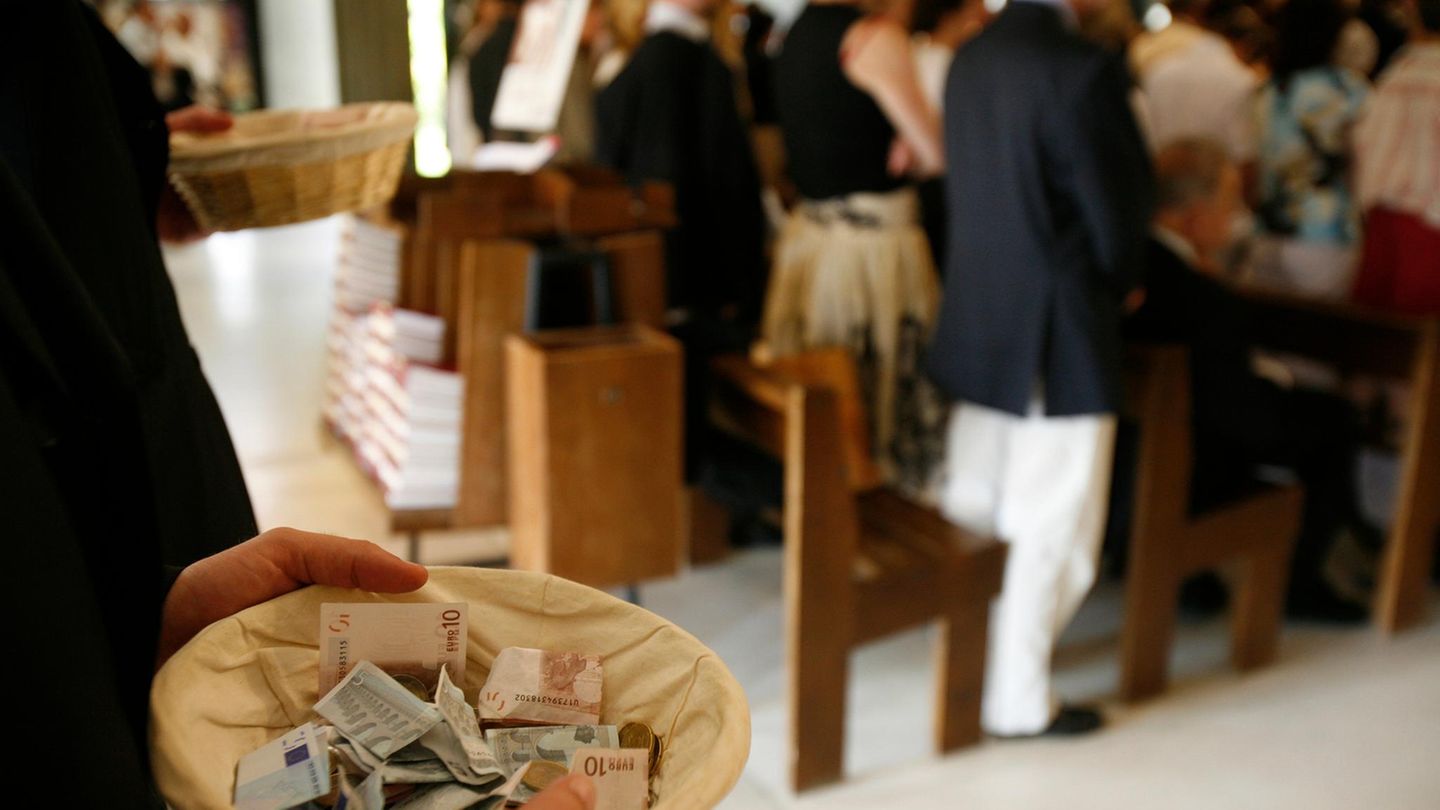Image: Arne Dedert (dpa)
There is speculation on the financial markets that the European Central Bank (ECB) could be the first to make this change in monetary policy direction – possibly as early as April. This would preempt the influential US Federal Reserve Bank, the Fed, whose boss Jerome Powell recently largely dismissed expectations of an interest rate cut in March.
Since the dollar watchdogs don’t have a meeting on their calendar in April, the ECB would move first in this kind of interest rate mikado. However, there are considerable doubts among economists as to whether the ECB, which is considered to be cautious, will venture out first. Many see the US Federal Reserve as playing a pioneering role.
- more on the subject: The interest rate turnaround has begun: after two years of increases, loans are becoming cheaper
“We expect the Fed to make its first interest rate cut in May and to follow up with a second one in June. We only expect the ECB to cut interest rates in June,” says economist Christoph Balz from Commerzbank. When it came to the markets’ expectations of the interest rate turnaround, the current data, which indicate a decline in inflation, probably played a role. With the inflation rate recently falling to 2.8 percent, the ECB’s target of 2.0 percent inflation is gradually coming into view. Bundesbank President Joachim Nagel is already saying that the ECB has tamed the “greedy beast” of inflation. “But the central bank wants to see more data to be sure that inflation actually remains low,” says Balz. And in his opinion, it would not be well received, especially as a first step, if you start with interest rate cuts and then realize that this was a mistake. At its first interest rate meeting of the new year in January, the ECB left the deposit rate, which is relevant for the financial markets, at 4.00 percent.
Price and growth path are the decisive factors
Economist Paolo Zanghieri from Generali Investments assumes that the Fed in the USA will have enough data together by May to be on the safe side when assessing the sustained decline in inflation. This would allow the Fed to start turning interest rates. After a phase of sometimes aggressive increases, the US Federal Reserve recently paused four times in a row and kept the key interest rate in the range of 5.25 to 5.50 percent. The financial market currently rates the probability of an interest rate cut at the Fed interest rate meeting on May 1st at around 68 percent.
The price and growth path are the decisive factors. “It all depends on how inflation and the economy develop,” says Konstantin Oldenburger, market analyst at CMC Markets. He points out that Powell also emphasized that the Fed does not want to see a weak labor market: “That in turn leaves room for maneuver in both directions.” The Fed is trying to find a balance after almost two years of interest rate hikes, which is proving difficult. A too early interest rate cut could fuel inflation again. “However, if you wait too long, despite declining inflation, this could damage the economy and increase unemployment,” explains Oldenburger. DZ Bank analyst Christian Reicherter sees the Fed in pole position when it comes to the interest rate turnaround. “Our picture at the moment is that the US monetary authorities will be the first to initiate a change in key interest rates,” says Reicherter. However, he does not expect the first cautious step downwards until June. “The crux of the matter at the moment is the uncertainty as to whether the disinflation process of the past few months will continue,” said the expert.
Data on wage development is important
In the euro zone, the monetary authorities have recently repeatedly pointed out that data on wage developments from the collective bargaining rounds in the euro countries are important for the decision. ECB boss Christine Lagarde had named April and May as months in which the ECB would know more about this. In addition, from the perspective of DZ Bank expert Reicherter, the ECB is also keeping an eye on energy prices given the current tensions in the Middle East. Reicherter believes that the ECB would first like to gain more clarity on these two points, which speaks against the rapid interest rate cut expected on the market. “In our view, interest rate cuts by the ECB will only start in the second half of the year,” said the expert. However, the futures prices on the financial market currently show that the probability of an interest rate cut at the meeting on April 11th is estimated at around 55 percent. Such a step is already considered a safe bet for the meeting on June 6th.
It is possible that the Fed and the ECB will both wait until the end of spring and then change direction in quick succession in June: the ECB meeting is scheduled for June 6th, the Fed will follow on June 12th. According to Deka chief economist Ulrich Kater, the Fed and the ECB could jointly decide on the first easing of monetary policy in June: “For the economy, this gives hope that the burdens will subside. Relief can already be felt, particularly in the construction sector and also in some parts of industry.” The continuing decline in inflation rates would have made this possible.
My themes
For your saved topics were
new articles found.

info By clicking on the icon you can add the keyword to your topics.
info
By clicking on the icon you open your “my topics” page. They have of 15 keywords saved and would have to remove keywords.
info By clicking on the icon you can remove the keyword from your topics.
Add the topic to your topics.
Source: Nachrichten




